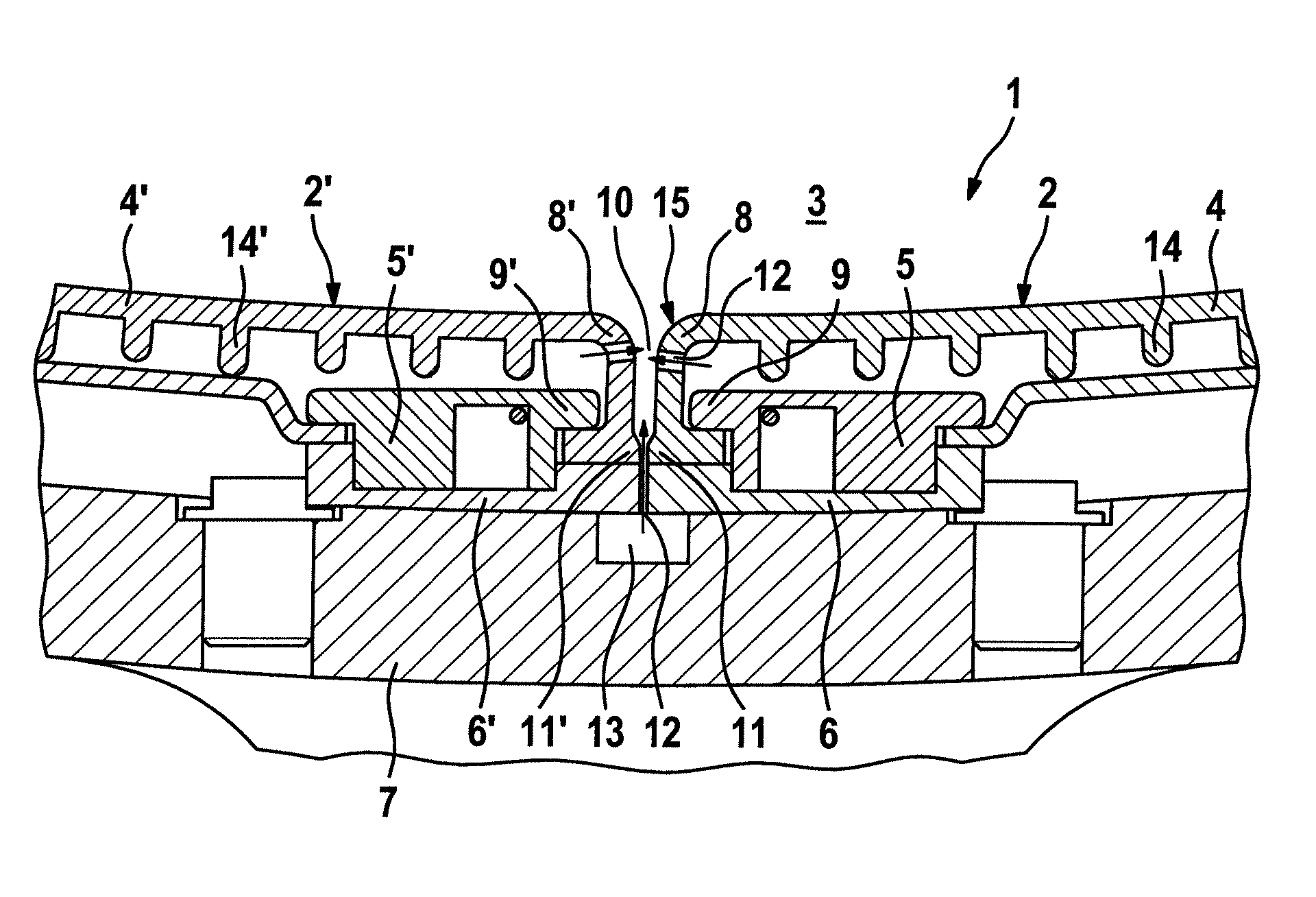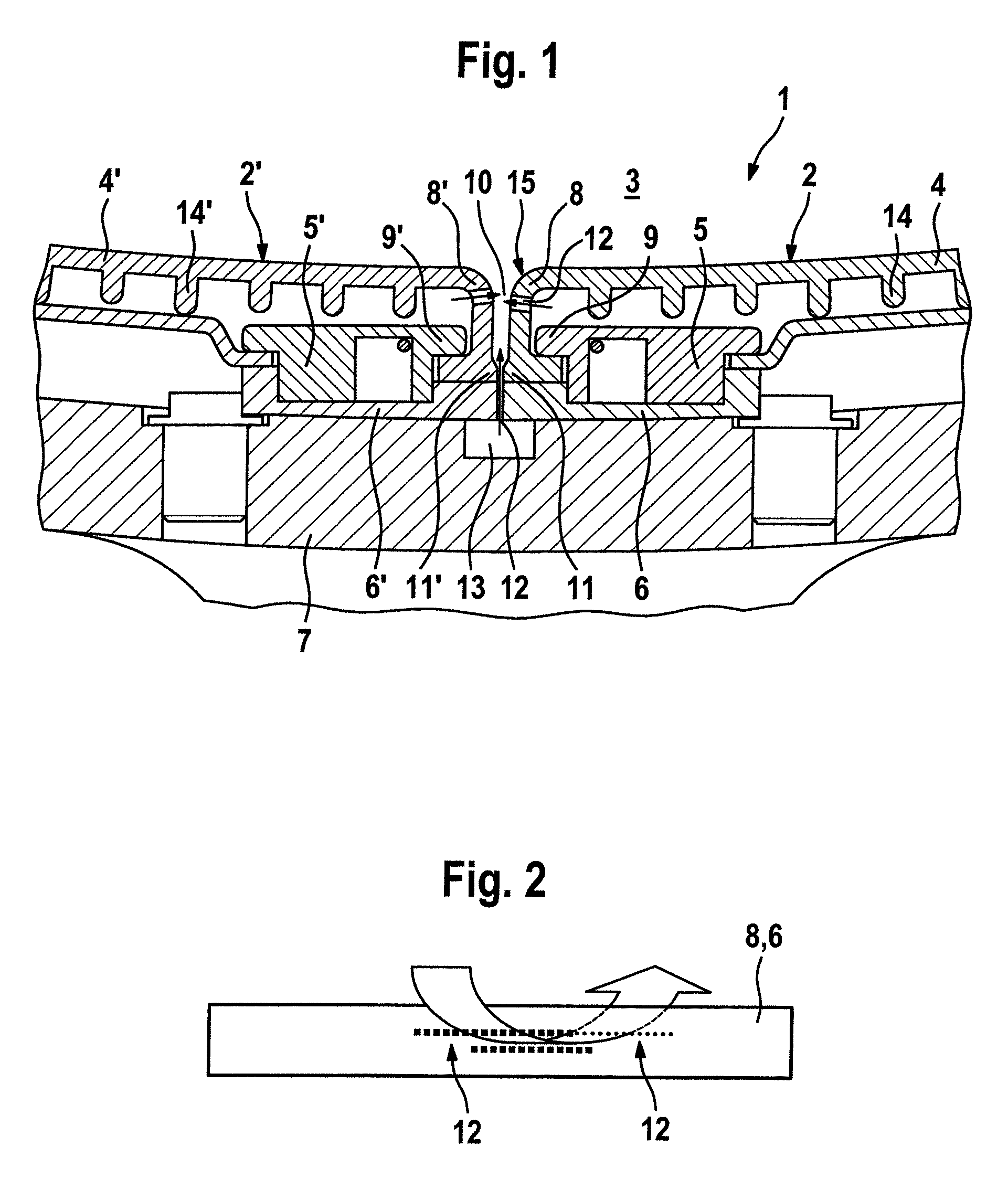Combustion chamber of a combustion system
a combustion system and combustion chamber technology, applied in the field of combustion chambers of combustion systems, can solve the problems of not decreasing the efficiency exposing the system to the elements without protection, and forming gaps, so as to ensure the functional capability of the heat shield, ensure the longevity of the combustion system, and prolong the combustion system. the effect of the combustion system
- Summary
- Abstract
- Description
- Claims
- Application Information
AI Technical Summary
Benefits of technology
Problems solved by technology
Method used
Image
Examples
Embodiment Construction
[0014]In accordance with FIG. 1, a sectional view through a combustion chamber wall of a combustion system, especially of a gas turbine, is shown, with a heat shield 1 which has at least two segments 2 and 2′ which are arranged next to each other. The two segments 2, 2′ in each case have a liner element 4 or 4′, which faces a combustion space 3, and a retaining device 5, 5′. The liner element 4 in this case, as well as the liner element 4′, is formed from a material which is not affected by heat so that it withstands in a problem-free manner a direct contact with hot gases which are present in the combustion space 3. The two liner elements 4, 4′ are fixed on a support structure 7 via at least one support element 6, wherein the retaining device 5 fixes both the liner element 4 and the at least one support element 6 on the support structure 7. In this case, fastening of the liner element 4 on the retaining device 5 is carried out by means of an edge region 8 which is formed on the lin...
PUM
 Login to View More
Login to View More Abstract
Description
Claims
Application Information
 Login to View More
Login to View More - R&D
- Intellectual Property
- Life Sciences
- Materials
- Tech Scout
- Unparalleled Data Quality
- Higher Quality Content
- 60% Fewer Hallucinations
Browse by: Latest US Patents, China's latest patents, Technical Efficacy Thesaurus, Application Domain, Technology Topic, Popular Technical Reports.
© 2025 PatSnap. All rights reserved.Legal|Privacy policy|Modern Slavery Act Transparency Statement|Sitemap|About US| Contact US: help@patsnap.com


